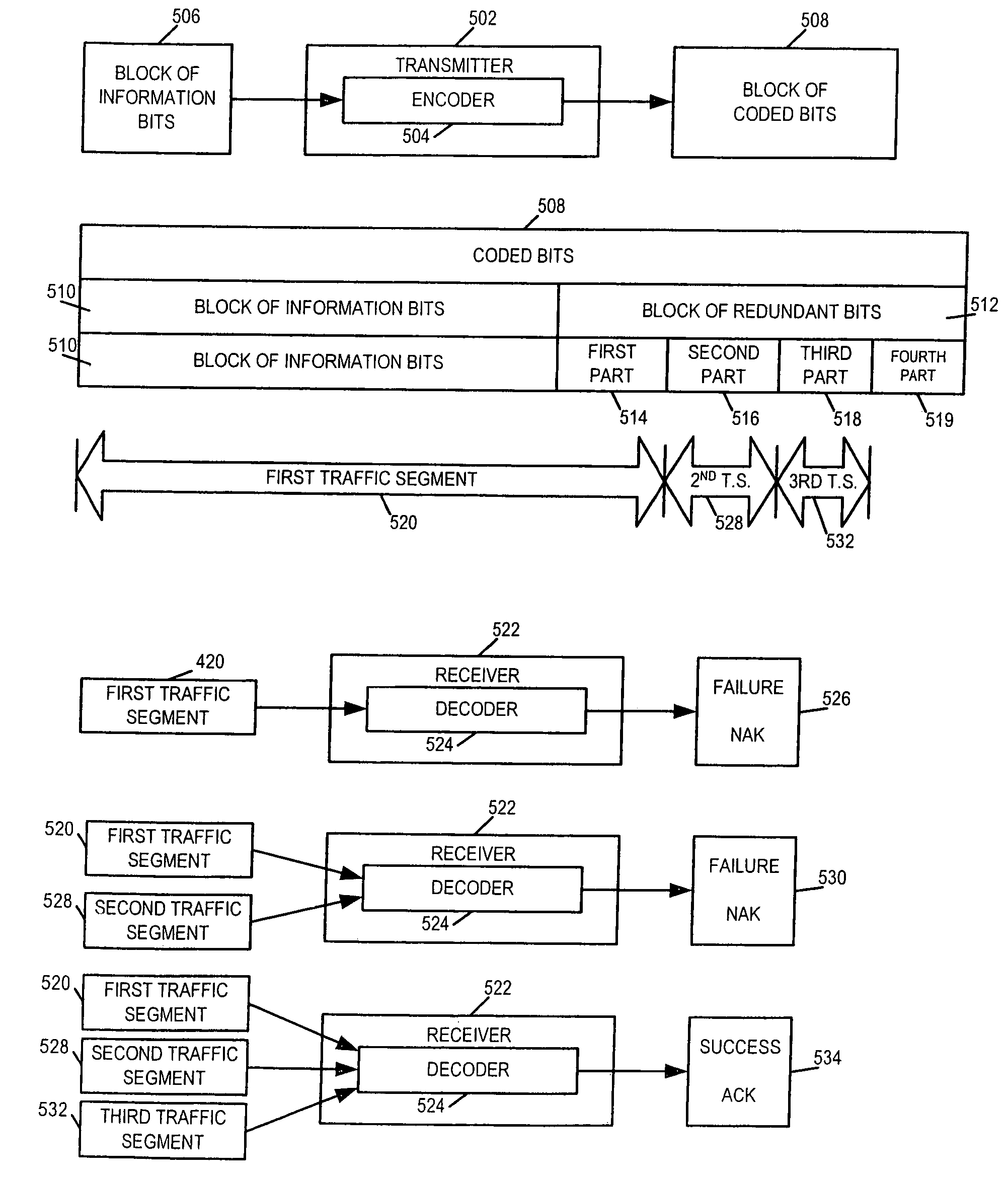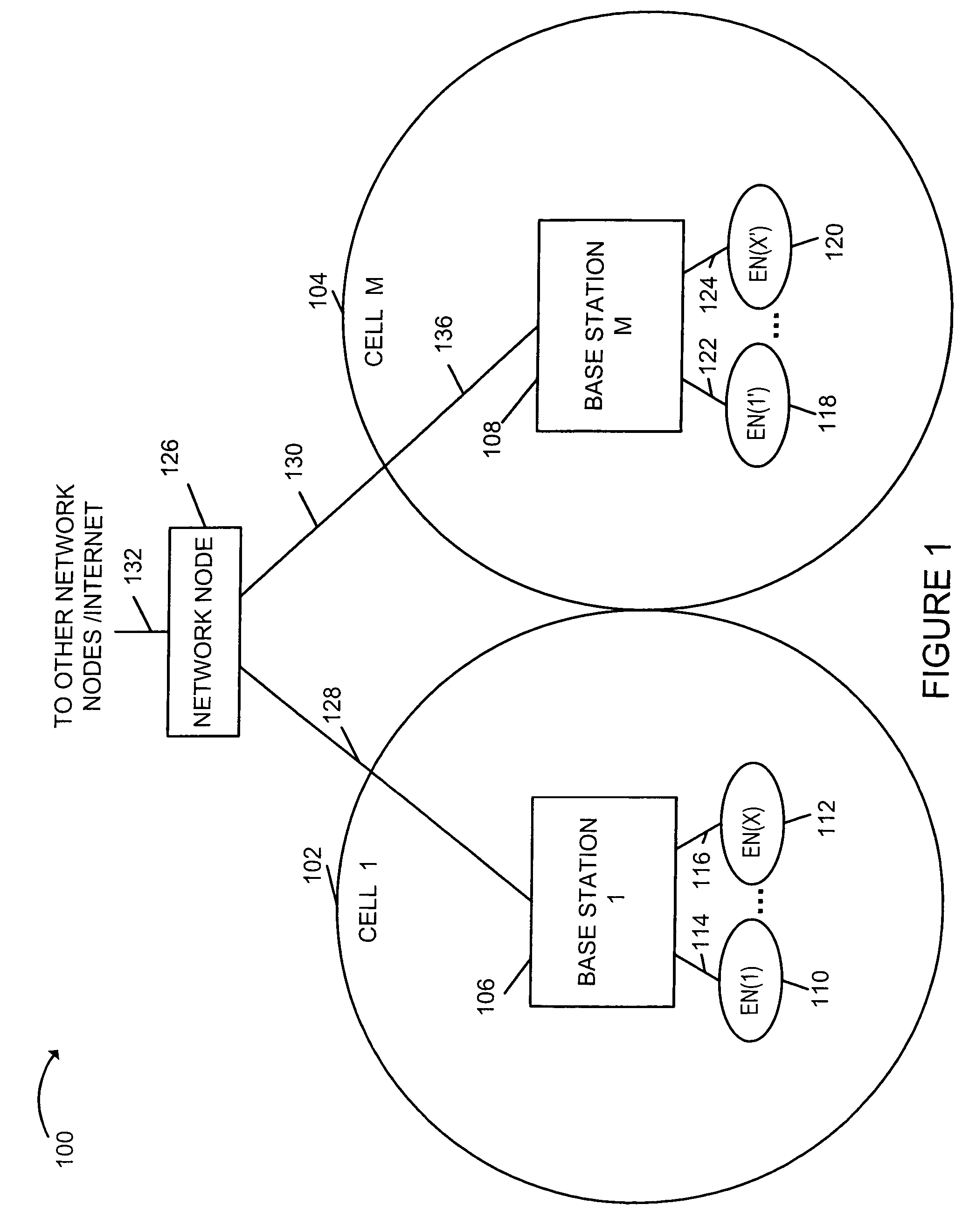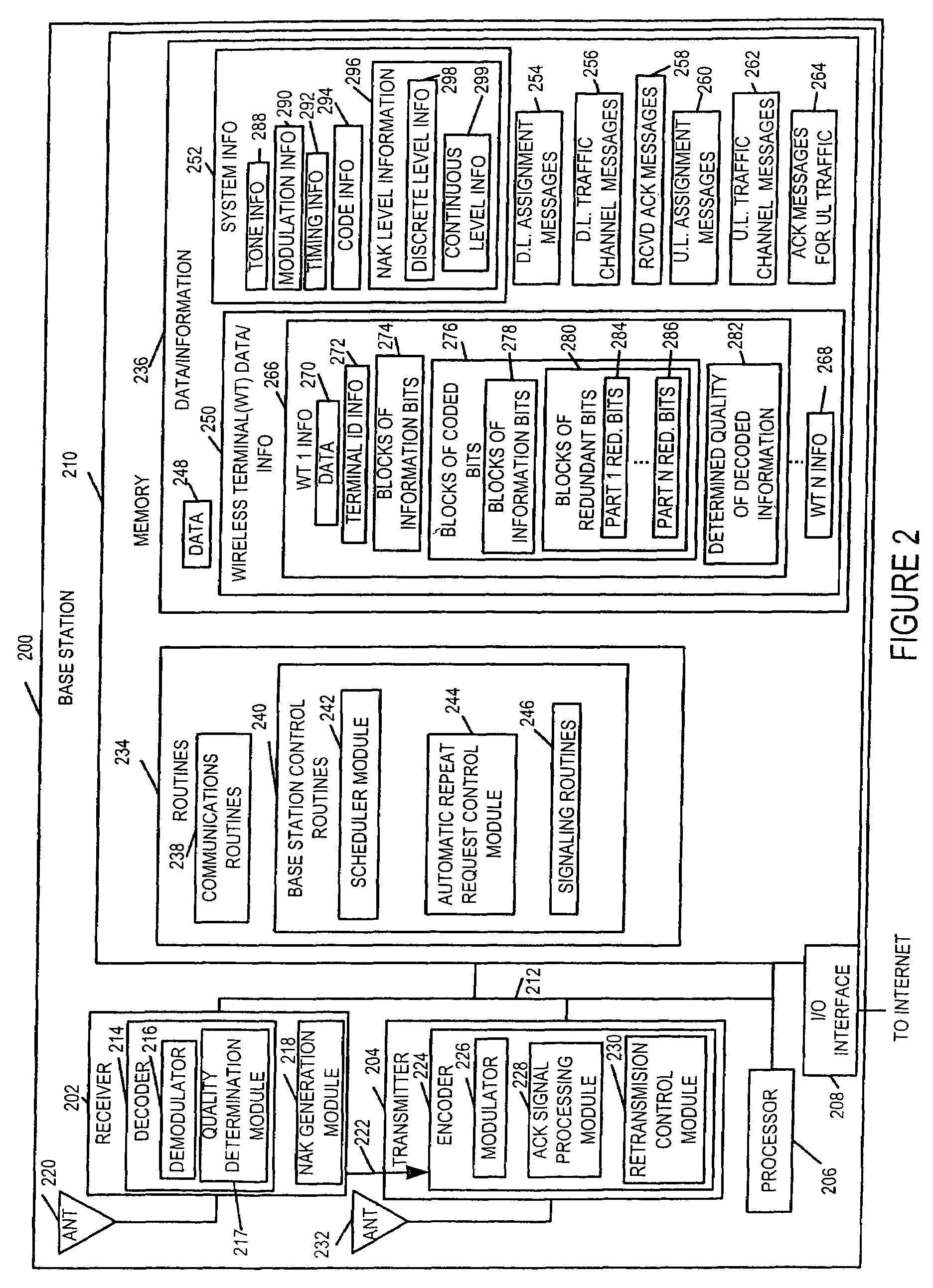Efficient automatic repeat request methods and apparatus
a technology of automatic repeat request and automatic repeat request, applied in the field of improved methods of communication in a wireless communication system, can solve problems such as unsatisfactory reliability, and achieve the effect of reducing the amount of redundant information
- Summary
- Abstract
- Description
- Claims
- Application Information
AI Technical Summary
Benefits of technology
Problems solved by technology
Method used
Image
Examples
Embodiment Construction
[0036]The method and apparatus of the present invention are well suited for cellular communications systems but are not limited in terms of applicability to such systems. Cellular systems in which the invention may be used normally include multiple cells with each cell including at least one base station and a plurality of wireless terminals, e.g., mobile nodes. FIG. 1 illustrates an exemplary wireless communications system 100 implemented in accordance with and using the methods of the present invention. Exemplary wireless communications system 100 supports efficient automatic repeat requests (ARQ) in accordance with the present invention. Exemplary wireless communications system 100 is a spread spectrum OFDM (orthogonal frequency division multiplexing) multiple-access system. While an exemplary OFDM wireless communications system is used in this application for purposes of explaining the invention, the invention is broader in scope than the example, and the invention can be applie...
PUM
 Login to View More
Login to View More Abstract
Description
Claims
Application Information
 Login to View More
Login to View More - R&D
- Intellectual Property
- Life Sciences
- Materials
- Tech Scout
- Unparalleled Data Quality
- Higher Quality Content
- 60% Fewer Hallucinations
Browse by: Latest US Patents, China's latest patents, Technical Efficacy Thesaurus, Application Domain, Technology Topic, Popular Technical Reports.
© 2025 PatSnap. All rights reserved.Legal|Privacy policy|Modern Slavery Act Transparency Statement|Sitemap|About US| Contact US: help@patsnap.com



